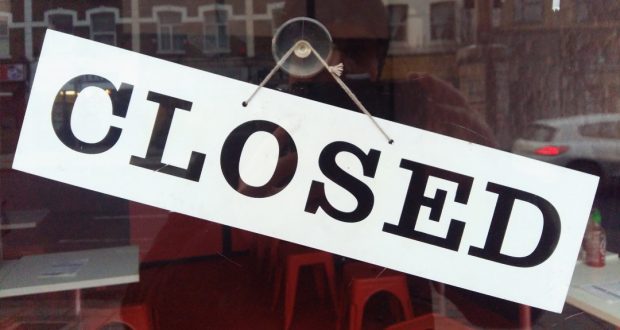By Quinci LeGardye | California Black Media
More than half of California is now under a regional stay-at-home order.
Last week, when the governor announced the impending shutdown, he said health officials had carved the state into five regions. Their goal is to coordinate a broad emergency response that would reach across county lines and consider the proximity and capacity of health services within each area based on population and density. Those regions are: Northern California; Greater Sacramento; Bay Area; San Joaquin; and Southern California.
Effective Dec. 6 at 11:59 p.m., the Southern California and San Joaquin Valley regions went under the order after both areas’ intensive care unit (ICU) capacities fell under 15 % — the threshold Gov. Newsom set last week as the bar that would trigger shutting down.
Five Bay Area counties also went under the order voluntarily on Dec. 6.
But as the state strengthens restrictions, Republican lawmakers are calling for transparency. They are calling on Gov. Newsom to share data that detail the affects that COVID-19 related restrictions have had on Californians. On Dec. 3, Senate Republican Leader Shannon Grove (R-Bakersfield) called on the governor to revise the state’s re-opening standards, called the Blueprint for a Safer Economy.
In November, Grove wrote a letter asking the governor to allow gyms, museums, places of worship and restaurants to remain open for indoor use with social distancing guidelines whenever the state enforced its strictest social isolation policies under the Blueprint for a Safer Economy.
Last week, Grove also called on Gov. Newsom to release data relating to mental health, domestic violence and the achievement gap in education between Black and Brown students (and lower income students across the board) and their White peers since March.
“Californians have a right to public health data that is being used to shape their lives, and the governor owes the state leadership that is committed to transparency and accountability. We have to ensure the state’s actions are based on a holistic approach that protects out mental, social, and emotional well-being along with our physical health,” said Grove.
State health officials announced Dec. 5 that ICU capacity had fallen to 12.5 % in the Southern California region, and 8.6 percent in the San Joaquin Valley region. Statewide, California had the highest number of new coronavirus cases for one day on Dec. 5, with 25,000 new reported cases.
The stay-at-home order went into effect three days after Gov. Newsom announced the 15 % threshold for ICU. capacity. It affects 33 million Californians, 80 % of the state’s population. The order will last for three weeks, and it will be renewed on a weekly basis until the region’s projected I.C.U. capacity increases to 15 % or more.
“We are at a tipping point in our fight against the virus and we need to take decisive action now to prevent California’s hospital system from being overwhelmed in the coming weeks,” Newsom said.
Under the order, gatherings of any size of people from more than one household are prohibited. Non-essential businesses must close, including bars, wineries, hair salons and barber shops, nail salons, museums, movie theaters, playgrounds, indoor recreation facilities and amusement parks. Travel is also prohibited except as necessary for permitted activities, such as working at essential businesses or doing necessary shopping.
Retail businesses can stay open, but they are limited to 20 % capacity, and restaurants can only do takeout or delivery. Schools that are already open for in-person instruction can remain open along with critical infrastructure businesses. Also, worship services and protests are allowed as long as they take place outdoors.
Though most activities are now closed, the state government encourages members of the same household to visit parks and beaches, which remain open under the order, to maintain their physical and mental health.
The current stay-at-home order is the most restrictive statewide order since the March 19 order, which closed everything except essential businesses. On Nov. 21, the state directed counties with high caseloads to stay home and close non-essential businesses between 10 p.m. and 5 a.m., but case numbers continued to rise.
The regional stay-at-home-order also comes soon after the Thanksgiving holiday. Public health officials have expressed their fear that the impact of Thanksgiving has yet to be seen, since any possible COVID-19 infections from that time can begin to show symptoms within the next week or so.
“We know that those cases that occurred around people’s dinner tables or activities and travel through Thanksgiving are going to show up right about now,” said California Health and Human Services Secretary Dr. Mark Ghaly on Dec. 7. “We believe that the levels of transmission that we’ve been reporting will likely continue to go up because of those activities.”
The current list of counties under the stay-at-home order as of Dec. 7 include: Los Angeles, Orange, Riverside, San Bernardino, San Diego, San Luis Obispo, Santa Barbara, Ventura, Imperial, Inyo, Mono, Calaveras, Fresno, Kern, Kings, Madera, Mariposa, Merced, San Benito, San Joaquin, Stanislaus, Tulare, Tuolumne. The Bay Area counties under the order include: San Francisco, Santa Clara, Contra Costa and Alameda, with Marin County going under the order Dec. 8.
 Westside Story Newspaper – Online The News of The Empire – Sharing the Quest for Excellence
Westside Story Newspaper – Online The News of The Empire – Sharing the Quest for Excellence



